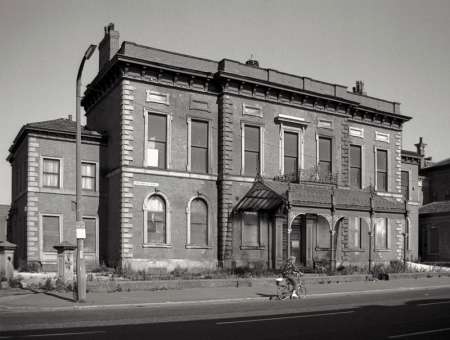Cheetham Town Hall Cheetham Hill Road Manchester
- Foundation: Stone laid Friday 21 April 1854
- Opening: January 1855
Until 1820 the route from Manchester north to Middleton was along narrow lanes up Red Bank and North Street, joining the turnpike road to Bury near Elizabeth Street, However, with the rapid growth of the cotton industry, better communications became essential. As part of the improvements to the road network, a new crossing of the River Irk was made at Ducie Bridge and a straight wide road from the bridge to the turnpike completed in 1820. This road, originally called York Street, forms the present Cheetham Hill Road. Development was very slow, the 1848 Ordnance Survey still showing open fields on each side of the road for much of its length. However, by the middle of the nineteenth century Cheetham was rapidly becoming one of Manchester's wealthiest suburbs with its major public and civic buildings erected on York Street. The earliest of these was Cheetham Town Hall, 1853‑5, built in a restrained Italianate palazzo style of brick with stone dressings. It comprises a main block of seven bays with a three bay projecting centre and two side wings set back with an elegant iron and glass porte‑cochere protecting the main entrance door. The building still remains, although now empty. The Town Hall originally formed part of a group of municipal buildings which, with the general changes in the area have also become redundant. Among these were Prestwich Union Offices, the Assembly Rooms, and the Great Synagogue, now demolished, and the Free Library, gutted by fire early in 1988.
Reference Manchester Guardian 12 November 1853 page 3 – contracts
Reference Manchester Times 22 April 1854 page 5
Reference Manchester Guardian 27 January 1855 page 9 - opening
Reference Manchester Courier 27 January 1855 page 10
Reference Manchester Times 27 January 1855 page 10
Reference Civil Engineer and Architects Journal Volume 18 1855 page 105
Reference Builder 10 February 1855 page 66
